40 the label corrosive on a chemical container indicates
Lithium hydroxide | LiOH - PubChem Excerpt from ERG Guide 154 [Substances - Toxic and/or Corrosive (Non-Combustible)]: SMALL FIRE: Dry chemical, CO2 or water spray. LARGE FIRE: Dry chemical, CO2, alcohol-resistant foam or water spray. Move containers from fire area if you can do it without risk. Dike fire-control water for later disposal; do not scatter the material. FIRE ... Know Your Hazard Symbols (Pictograms) | Office of Environmental Health ... Hazard symbols have come a long way from the rudimentary drawings used to designate poison in the early 1800s. As a result of updated OSHA chemical labeling requirements, 2016 marks the first full year of adoption of the Globally Harmonized System of Classification and Labeling of Chemicals (GHS) in the U.S.
Chemical Container Labeling - Laboratory Safety Use these methods to label your secondary chemical containers: STEP 1: Write out the entire name of the chemical. STEP 2: Indicate the GHS Hazard Class (es). Use self-stick GHS Pictogram (s) to identify the chemical hazards, OR. Write the GHS Hazard Class (e.g., "Corrosive") on the container. Use the SDS or PubChem to determine the proper ...
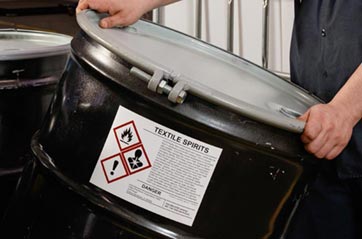
The label corrosive on a chemical container indicates
Section 2: Waste Containers, Storage and Labelling As soon as hazardous waste is place into a container, it must be appropriately labeled as indicated below. The following information must be on the label: The words "HAZARDOUS WASTE" must appear on the label. PI/Supervisor name. Waste Generator name and contact phone number. Complete chemical names of all waste in the container must be listed. Chemical Containers (Correct Labeling) - Environmental Health & Safety Signal Word: Used to indicate the relative level of severity of the hazard and alert the reader to a potential hazard on the label. There are only two words used as Signal Words, "Danger" and "Warning." Within a specific Hazard Class, "Danger" is used for the more severe hazards and "Warning" is used for the less severe hazards. Pictogram (s) Labeling Your Hazardous Chemicals Properly - HCL Labels - Blog February 19, 2019 bnell232. The UN Globally Harmonized System of Classification and Labeling of Chemicals (GHS) refers to a set of standards surrounding the Safety Data Sheets (SDS) as well as labeling of hazardous chemical containers. For companies, universities, governments, and any other entity that use or handle dangerous chemicals in the ...
The label corrosive on a chemical container indicates. Chemistry Lab Safety Quiz Flashcards | Quizlet Approved eye protection devices (such as goggles) are worn in the laboratory A. to avoid eye strain. B. to improve your vision. C. only if you don't have corrective glasses. D. any time chemicals, heat or glassware are used. Any time chemicals, heat or glassware are used 4. If you wear contact lenses in the school laboratory, The label caution on a chemical container most all of the above 45. The label CORROSIVE on a chemical container indicates a) that the material can degrade rapidly upon exposure to air b) that the material is an oxidant c) that contact destroys living tissue as well as equipment c ) that contact destroys living tissue as well as equipment Signs and Symptoms of Pesticide Poisoning | HeadLice.Org Both first aid and medical treatment procedures are listed on the product label. Recognizing Common Pesticide Poisonings. All pesticides in a given chemical group generally affect the human body in the same way; however, severity of the effects vary depending on the formulation, concentration, toxicity and route of exposure of the pesticide. Consumer Chemical Products in the Workplace : OSH Answers Three symbols indicate the hazard of the product itself (i.e., corrosive, flammable, or toxic shown in a hexagon shape), and one indicates the hazard of the container (exploding object shown in an upside-down triangle). Not all hazardous consumer products require a hazard symbol (e.g., quick skin-bonding adhesives).
120 Questions That Could Save Your Life Laboratory Safety Quiz The label CORROSIVE on a chemical container indicates : a) that the material is an oxidant: b) that contact destroys living tissue as well as equipment: c) that the material can degrade rapidly upon exposure to air: ACS SAFETY DATA SHEET - Fisher Sci Oct 20, 2009 · Specific Hazards Arising from the Chemical Non-combustible, substance itself does not burn but may decompose upon heating to produce corrosive and/or toxic fumes. Do not allow run-off from fire-fighting to enter drains or water courses. Hazardous Combustion Products Hydrogen iodide. Protective Equipment and Precautions for Firefighters Hazard symbols and hazard pictograms - Chemical classification - HSE The GB CLP hazard pictograms appear in the shape of a diamond with a distinctive red border and white background. One or more pictograms might appear on the labelling of a single chemical. GB CLP hazard pictograms. Explosive (Symbol: exploding bomb) Flammable (Symbol: flame) Oxidising (Symbol: flame over circle) Corrosive (Symbol: corrosion) How to Work Safely with - Hazardous Products using the "Corrosion ... Use corrosion-resistant equipment such as pumps, scoops or shovels. Do not add water to the corrosive product. If it is necessary to mix a corrosive product with water, do so slowly adding the corrosive to cold water, in small amounts, and stir frequently. Cautiously move containers. Move large drums using drum cradles.
Chemical Container Labels | EHS - University of Washington The Hazard Communication Standard requires secondary chemical container labels contain at least the following information: Identity of the contents (spell out chemical names) Signal word, if known or suspected (e.g., "danger", "warning") Hazards, if known or suspected (e.g., "flammable", "corrosive", "irritant") Chemical Waste Disposal - Environmental Health & Safety Laboratory Hazardous Waste Management and Disposal Manual 5. Specific Waste Management Requirements 5.2 Chemical Waste Management 5.2.1 Definition 5.2.2 Packaging 5.2.3 Labelling 5.2.4 Storage 5.2.5 Special Cases 5.2.6 Collection Schedule Chemical wastes are not treated on campus; the majority are recycled. Of the organic wastes produced, 100% are recycled through various industrial processes ... California Code of Regulations, Title 8, Section 5194. Hazard ... Sep 28, 2018 · (B) Any food, food additive, color additive, drug, cosmetic, or medical or veterinary device, including materials intended for use as ingredients in such products (e.g., flavors and fragrances), as such terms are defined in the Federal Food, Drug, and Cosmetic Act (21 U.S.C. 301 et seq.) and regulations issued under that Act, when they are subject to the labeling requirements of that Act and ... OSHA: Container Labels Flashcards | Quizlet The exclamation point mark pictogram represents a variety of hazard classes. Which of the following hazards could you expect if you see the pictogram? -Irritants -Skin sensitizers -Acute toxicity -Narcotic effects This pictogram represents three classes of hazards? -Skin corrosion and burns -Eye damage -Corrosive to metals
WHMIS 2015 - Labels : OSH Answers - Canadian Centre for Occupational ... A signal word is a prompt that alerts you about the degree or level of hazard of the product. There are only two signal words used: " Danger " or " Warning ". "Danger" is used for high risk hazards, while "Warning" is used for less severe hazards.
PDF HOW TO LABEL CHEMICAL WASTE CONTAINERS - University of Washington in its original container, you will need to place a UW Hazardous Waste Label on the container before pickup by EH&S. To print new hazardous waste labels, use Avery 5168, 3M 3100 or equivalent labels. Be sure to select "Actual Size" in the print options menu. • Print four identical labels to label containers with the same chemical contents ...
chem lab safety quiz Flashcards | Quizlet The label DANGER on a chemical container most accurately signifies. that the hazards can cause serious injury. Examples of corrosive chemicals include. HCl, H3PO4, KOH, Cl2. ... The label CORROSIVE on a chemical container indicates. that contact destroys living tissue as well as equipment. FLAMMABLE means. easily ignited and capable of burning ...
Chemical Safety Questions? Read the Label! - EHS Daily Advisor • "Toxic" means poisonous; the chemical can cause illness or even death. • "Target organ toxic" means it can injure specific organs. • "Corrosive" means that the chemical can burn or even destroy skin, lungs, or eyes on contact. Make sure employees understand the meaning of all the signal words on the labels of chemicals used in your workplace.
How to Work Safely with : OSH Answers - Canadian Centre for ... OSH Answers Fact Sheets. Easy-to-read, question-and-answer fact sheets covering a wide range of workplace health and safety topics, from hazards to diseases to ergonomics to workplace promotion. MORE ABOUT >. Download the free OSH Answers app. Search all fact sheets:
Dangerous goods - Wikipedia Dangerous goods are often indicated by diamond-shaped signage on the item (see NFPA 704), its container, or the building where it is stored. The color of each diamond indicates its hazard, e.g., flammable is indicated with red, because fire and heat are generally of red color, and explosive is indicated with orange, because mixing red ...
Chemical Hazardous Waste Containers: EPA and DOT Labeling Requirements A container used for chemical hazmat onsite storage must be marked with the words "Hazardous Waste." It must also exhibit the starting date for its accumulation along with information about its contents (e.g., toxic, reactive, ignitable, or corrosive). If you're reusing a container, make sure to remove the old labels.
3.0 Chemical Labeling - University of Nevada, Reno PICTOGRAMS indicate the hazard categories that are applicable to the chemical. ... Corrosive to Metals: 1: 3.4 Hazard Category Pictograms. ... 3.5 Replacement Labels. Each hazardous chemical container in the workplace must be labeled as described in section 3.2, or alternatively, labeling must include the product identifier and at least general ...
Chemical Safety Flashcards | Quizlet The label CORROSIVE on a chemical container indicates a) that the material is an oxidant b) that contacct destroys living tissues as well as equipments c) that the materical can degrade rapidly upon exposure to air B When molecules are metabolized a) Usually become less toxic molecules b) Usually become more toxic molecules
Reference Guide to GHS Container Labels | UArizona Research, Innovation ... This guide uses the RLSS-recommended format for GHS-compliant labels. This guide explains the required aspects of a GHS chemical container label and provides examples of GHS-compliant labels for Methanol (CAS # 67-56-1) and a Phenol, Chloroform & 3-methylbutan-1-ol mixture (CAS # 108-95-2, 67-66-3, 123-51-3) from Sigma Aldrich.
Solved 28. The label DANGER on a chemical container most | Chegg.com The label WARNING on a chemical container most accurately signifies A: That the hazards can cause less than serious injury B: That the hazards can cause serious injury C: That users should be careful when using, handling, or storing the chemical 30. The label CORROSIVE on a chemical container indicates A: That the material is an oxidant B: That ...
What does the corrosive symbol on a product label indicates ... - Answers A corrosive symbol on a product label indicates that the product is a corrosive material that could, depending on how corrosive it is, corrode steel or aluminum, or damage skin or other body tissue...
American Chemical Society Laboratory Safety Quiz The label CORROSIVE on a chemical container indicates: easily ignited and capable of burning rapidly. FLAMMABLE means: ... A large cloud of "smoke" and a WHOOSHing noise in the NMR room indicates: All of the above (Individual chemists, neighbors, co-workers, the environment, and wider community) ...
Tips for Properly Labeling Hazardous Waste Containers Each container should also include the generator's details, such as company, location, etc. Labels should properly indicate all hazardous waste codes in a way that's easily identifiable, along with the DOT shipping name and the date the waste was produced. Aside from these basic requirements, different types of hazardous waste require ...
Corrosive to metals means a chemical that by chemical GHS Compliant chemical label on a shipped container The label on a chemical will include: Product identifier - its name or what it is. Manufacturer information Signal words- indicate severity of hazard o Danger - more severe hazard o Warning - less severe hazard Pictograms - if any Hazard statement - are standardized and assigned phrases that describe the hazards.
SAFETY DATA SHEET - Fisher Sci This chemical is considered hazardous by the 2012 OSHA Hazard Communication Standard (29 CFR 1910.1200) Label Elements Signal Word Danger Hazard Statements May be corrosive to metals Causes severe skin burns and eye damage Company Fisher Scientific Company One Reagent Lane Fair Lawn, NJ 07410 Tel: (201) 796-7100 Skin Corrosion/Irritation ...
Chemical Storage Color Codes | Environmental Health, Safety, and Risk ... Many chemicals come with the color code already on the label. If your chemical container is not color coded, check the SDS Hazards Identification section in the SDS. You may use colored tape, dots, or permanent markers to mark your container. If you cannot find the color code for a particular chemical, give us a call at x 6771, x5197 or x5617.
Labeling Your Hazardous Chemicals Properly - HCL Labels - Blog February 19, 2019 bnell232. The UN Globally Harmonized System of Classification and Labeling of Chemicals (GHS) refers to a set of standards surrounding the Safety Data Sheets (SDS) as well as labeling of hazardous chemical containers. For companies, universities, governments, and any other entity that use or handle dangerous chemicals in the ...
Chemical Containers (Correct Labeling) - Environmental Health & Safety Signal Word: Used to indicate the relative level of severity of the hazard and alert the reader to a potential hazard on the label. There are only two words used as Signal Words, "Danger" and "Warning." Within a specific Hazard Class, "Danger" is used for the more severe hazards and "Warning" is used for the less severe hazards. Pictogram (s)
Section 2: Waste Containers, Storage and Labelling As soon as hazardous waste is place into a container, it must be appropriately labeled as indicated below. The following information must be on the label: The words "HAZARDOUS WASTE" must appear on the label. PI/Supervisor name. Waste Generator name and contact phone number. Complete chemical names of all waste in the container must be listed.

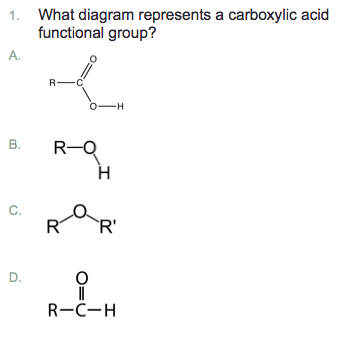
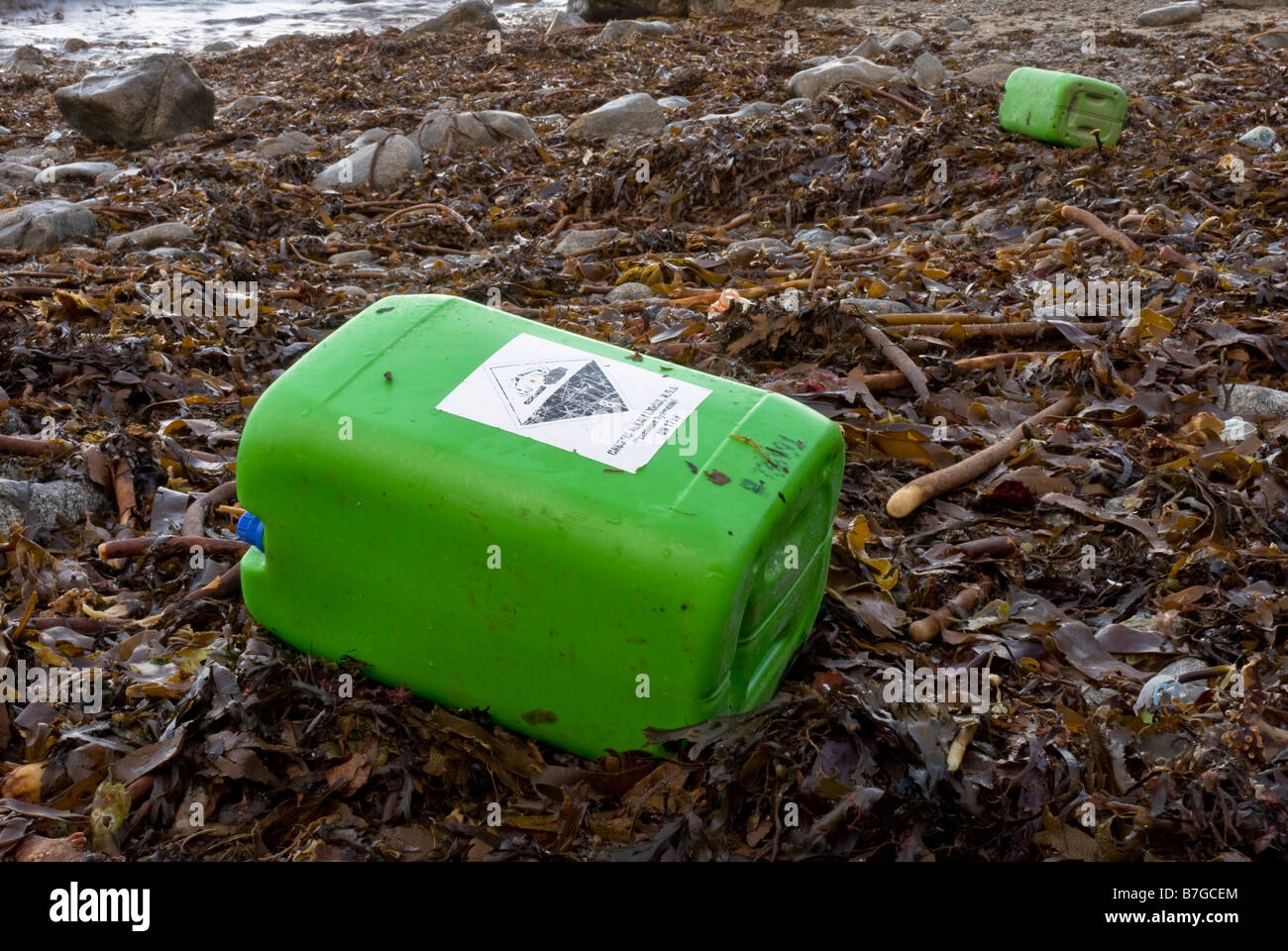

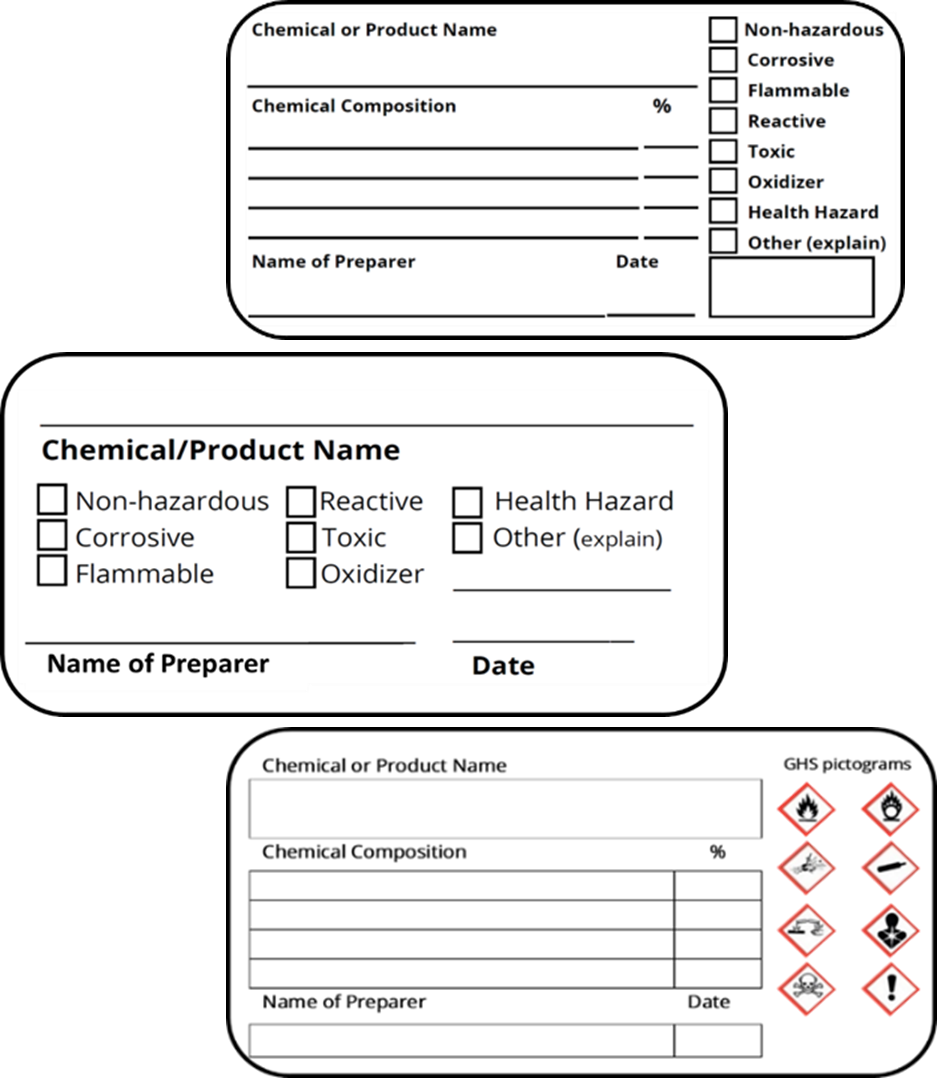

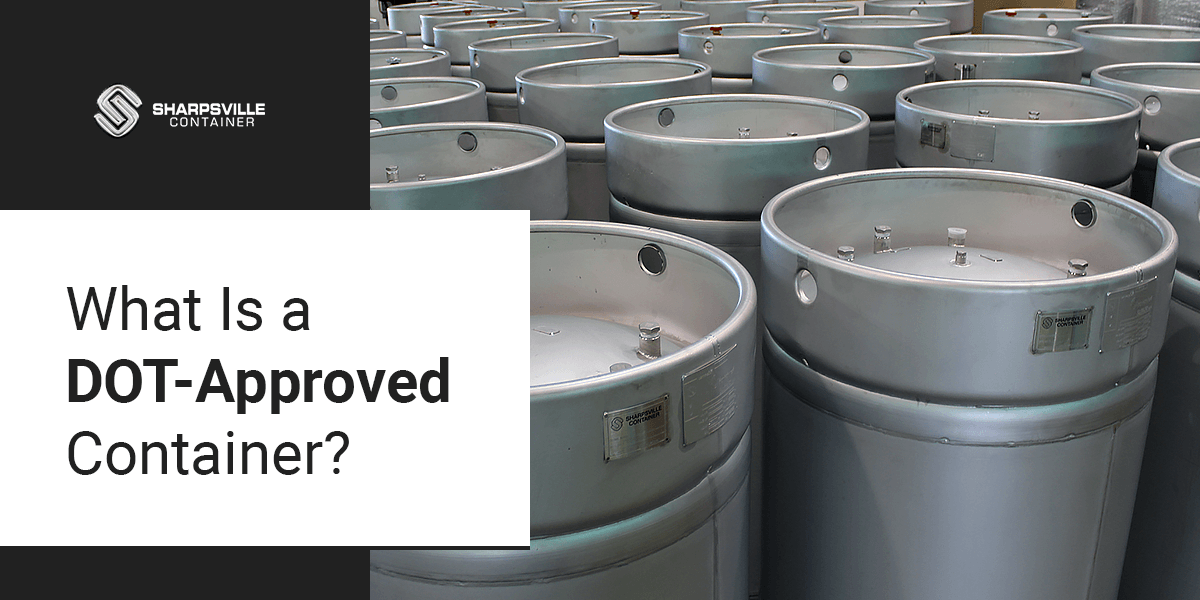
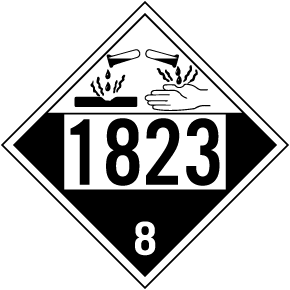


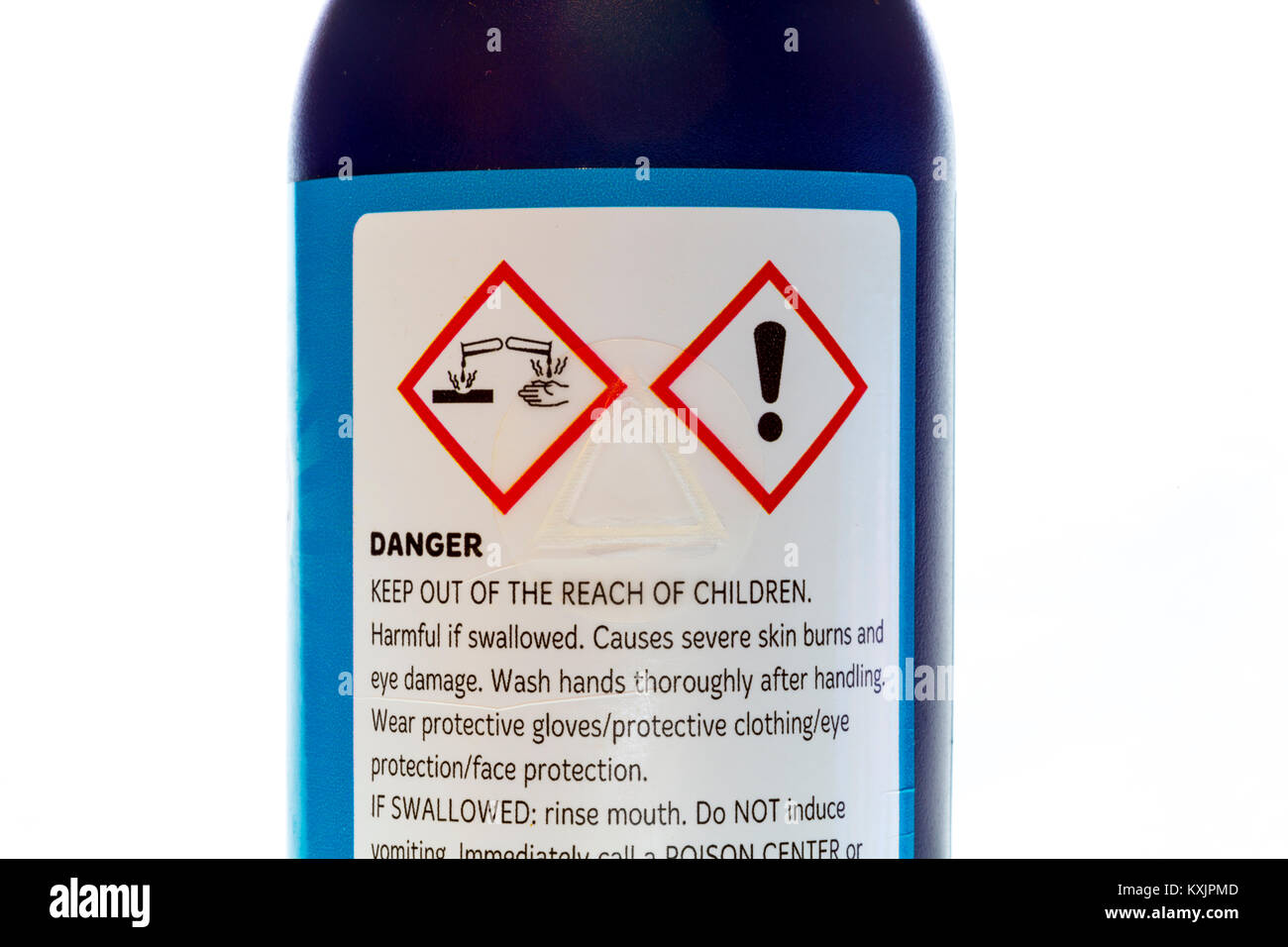
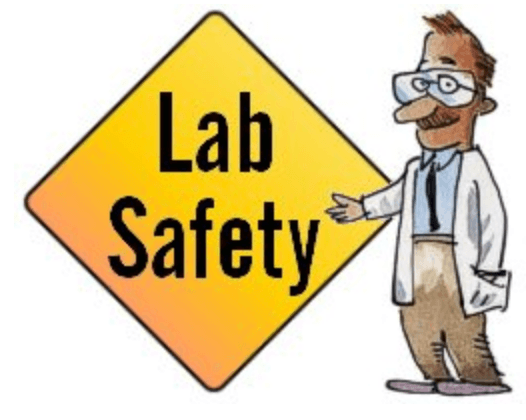

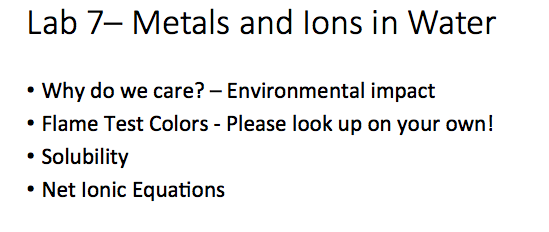



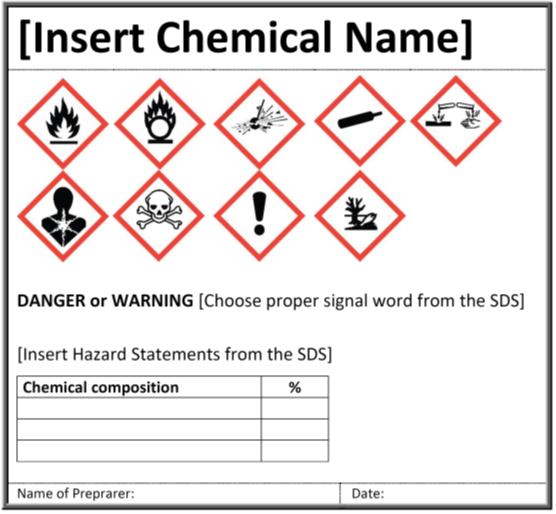




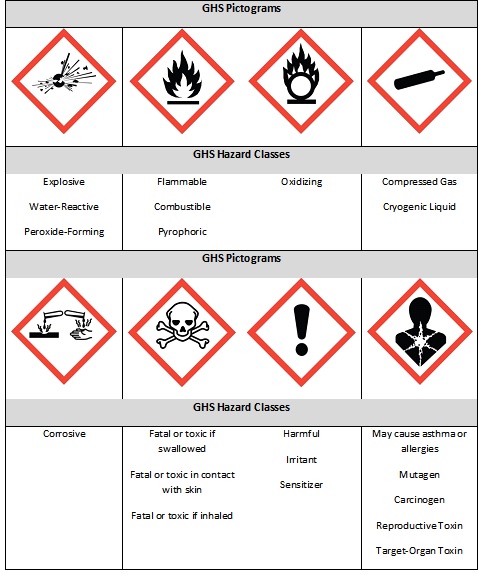






:max_bytes(150000):strip_icc()/Nalgene_bottles-59930c08054ad90011ef0c4c.jpg)
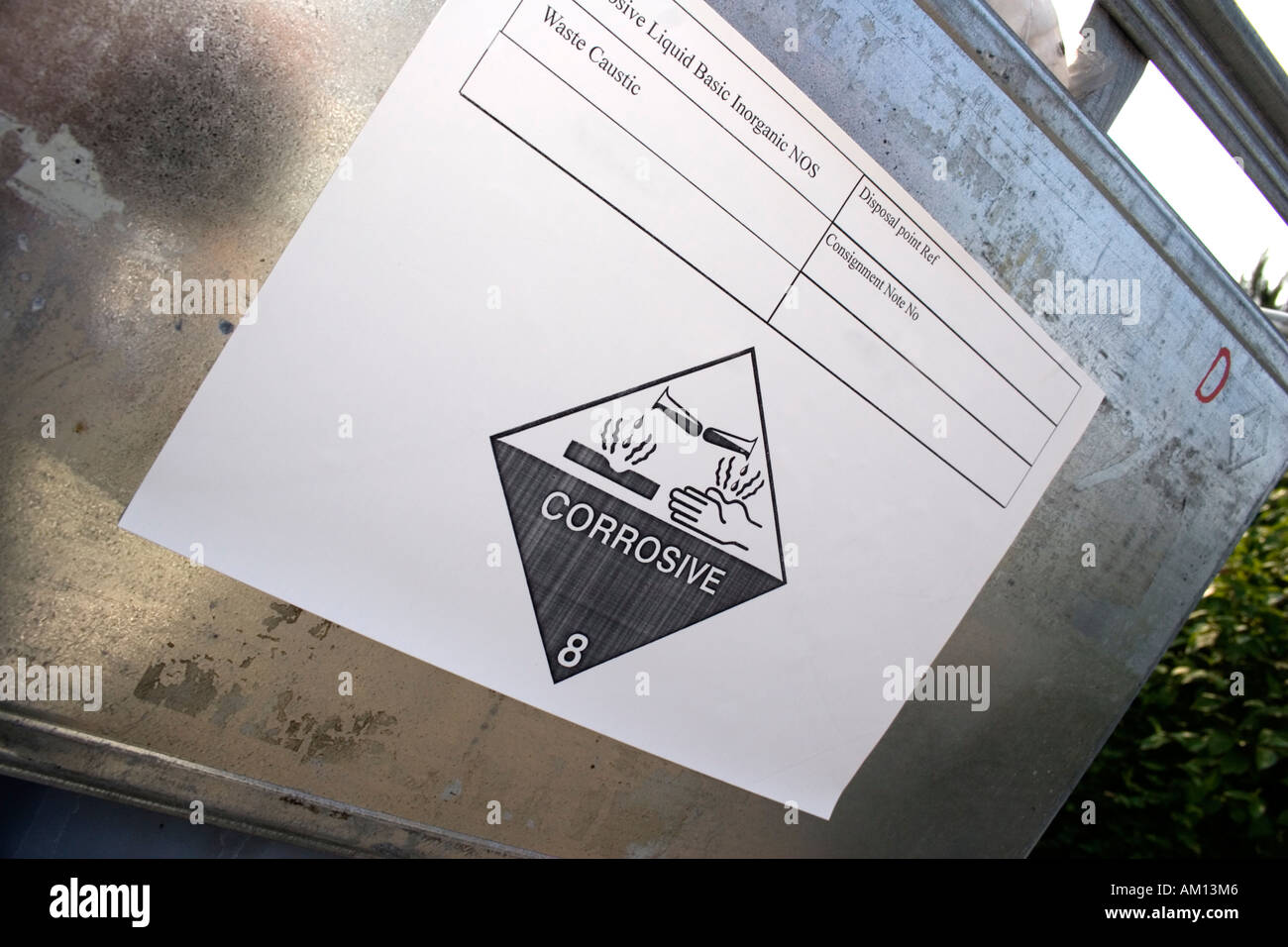
Post a Comment for "40 the label corrosive on a chemical container indicates"